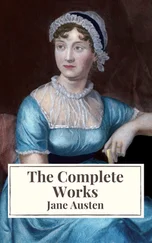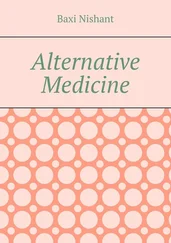Six months later, in June 1978, the court would reconvene to see whether laetrile was working and to determine who would care for Joey Hofbauer: his parents or the state.
Michael Schachter didn’t limit his therapy to laetrile. For the next six months, he also gave Joey raw milk, raw liver juice, cod liver oil, soft-boiled eggs, Staphylococcus phage lysate (staph bacteria infected with a virus), pancreatic enzyme enemas (which partially dissolve the lining of the colon), massive doses of vitamin A (which cause blurred vision, bone pain, and dizziness), a vaccine to prevent “Progenitor cryptocides” (a bacterium believed by a physician named Virginia Livingston to cause all cancers), a vegetarian diet, daily coffee enemas made by adding three heaping tablespoons of regular coffee to one quart of water (coffee enemas had already caused two deaths), seven injections of an “autogenous vaccine” (made from bacteria in Joey’s urine), and Wobe-Mugos enzymes (a combination of several pancreatic enzymes obtained from pigs). None of these therapies had been approved for use in people, and all were arguably in violation of New York State laws on human experimentation. A cancer specialist who later testified at Joey’s trial called it “a witch doctor’s diet.”
In June, six months into Joey’s unconventional treatments, the Saratoga County Department of Social Services, Dr. Michael Schachter, and several cancer specialists appeared before Judge Brown to determine whether Joey’s alternative cancer cures were working. Most damning was the testimony of John Horton, a professor of medicine at Albany Medical College and a board-certified cancer specialist, who had recently examined Joey. “On feeling the left side of the neck there was a [large] lymph node under the angle of the jaw,” he said, “and just below that another [large] lymph node [and] a string of lymph nodes coming down the neck as far as the clavicle [collarbone].” At the time of his diagnosis, Joey Hofbauer had had one swollen lymph gland; now he had seventeen. Dr. Anthony Tartaglia, a board-certified hematologist and chief of medicine at St. Peter’s Hospital, had also examined Joey. “There is no question in my mind that the extent of Hodgkin’s disease in [Joey] is much greater than when I examined him in December,” he said. Tartaglia added that the laetrile that Joey had received was the “equivalent of not getting any treatment.”
There were other worrisome signs. Tests showed that Joey had liver damage, most likely caused by dangerously high doses of vitamin A. Also, Schachter apparently didn’t realize that Joey’s “occasional nausea and abdominal cramps” were probably caused by cyanide poisoning from large doses of laetrile, having never obtained blood cyanide levels to check it out.
Unlike the cancer specialists who had examined Joey, Michael Schachter believed his program was working. “I think he is doing very, very well,” he said. “I’m just not as concerned about these lymph nodes in the neck as the other physicians. I feel that [laetrile and metabolic therapy] will be playing a major role in the way medicine is practiced over the next five to ten to fifteen years and consequently I would say that his treatment has been more than adequate, it has been superior.” The Hofbauers brought in their own experts—specifically, laetrile promoter Hans Hoefer-Janker; laetrile’s inventor, Ernest Krebs Jr.; and Marco Brown, who ran the Fairfield Medical Center, in Jamaica. On July 5, Judge Brown ruled in favor of the parents, stating that they were “concerned and loving” and that Dr. Schachter was “duly licensed.”
Although the cancer had spread into his neck, Joey was in the early stages of Hodgkin’s disease. And the Saratoga Department of Social Services wasn’t giving up. There was still time. Unfortunately, public sentiment was turning in favor of laetrile, making it harder and harder for Joey to get the medicines he needed to save his life.
By the end of the 1970s, laetrile wasn’t just a drug; it was a social movement.
Led by Robert Bradford, of Los Altos, California, the John Birch Society—an ultraconservative organization dedicated to eliminating government regulations—founded the Committee for Freedom of Choice in Cancer Therapy. By 1977 the committee claimed five hundred chapters and thirty-five thousand members. Committee members influenced popular television programs like 60 Minutes , magazines like Newsweek , and commentators like James Kilpatrick, all of whom promoted the wonders of laetrile. Almost singlehandedly, they successfully rallied public support for the drug. In 1976, Alaska became the first state to legalize both the manufacture and sale of laetrile; by 1978 fourteen states had followed; by 1979, twenty-one. Most Americans favored the legalization of laetrile; by 1980 it was a billion-dollar-a-year industry. A movement had been born—a movement that would soon include one of the most popular movie stars of the day.
In the summer of 1978, Steve McQueen ( The Great Escape , The Thomas Crown Affair , Bullitt , The Towering Inferno ) suffered from a persistent cough and weight loss. Doctors diagnosed him with bronchitis, then walking pneumonia, then a fungal infection. Eventually a lung biopsy revealed the problem: mesothelioma, an aggressive type of lung cancer. After learning he had cancer, McQueen checked into Cedars-Sinai in Los Angeles to begin radiation and chemotherapy, which didn’t work. Doctors told him he had only two months to live. So McQueen took matters into his own hands, choosing to treat himself with laetrile at a clinic in Mexico run by William D. Kelley.
Kelley was a flamboyant, charismatic promoter of alternative therapies. Born in Arkansas City, Kansas, he had studied dentistry at Baylor before setting up a clinic in Fort Worth and later in Grapevine, Texas. There Kelley started a mail-order vitamin business. Like Michael Schachter, Kelley believed nonspecific nutritional therapies could treat cancer. Under the direction of Kelley, McQueen received laetrile, massages, shampoos, megavitamins, nutritional supplements, chiropractic adjustments, a high-fiber diet, sheep embryo shots, enzyme implants, and twice-daily coffee enemas (marketed as Kelley’s Koffee)—treatments that cost McQueen ten thousand dollars a month (equivalent to eighty thousand dollars today).
Kelley used McQueen’s celebrity to promote laetrile. Appearing on the national television show Tomorrow , hosted by Tom Snyder, he said, “Those doctors gave him no hope. But his chances are excellent. I believe with all my heart that this approach represents the future of cancer therapy. It took Winston Churchill”—one of the first people to be treated with antibiotics—“to popularize antibiotic medicine. Steve McQueen will do the same for metabolic therapy.” McQueen echoed Kelley’s enthusiasm; appearing on Mexican television, he said, “Mexico is showing the world this new way of fighting cancer through nonspecific metabolic therapy. Thank you for saving my life. God bless you all.”
The John Birch Society’s manipulation of the media and the celebrated case of Steve McQueen influenced public opinion. Laetrile had moved into the mainstream. On December 14, 1978, the Saratoga County Department of Social Services appealed Judge Brown’s ruling of six months earlier. The case went before Judge Sweeney of New York’s Third District Court of Appeals, who reaffirmed the earlier decision: “We are of the view that there is ample proof to support the findings and determination of [Judge Brown’s] trial court.”
Joey Hofbauer would continue to be treated by Michael Schachter.
The Saratoga County Department of Social Services still had one more appeal—one more chance to save Joey Hofbauer’s life. The decision would be made on July 10, 1979. Fortunately for Joey Hofbauer, several events had been set in motion that would soon reduce the public’s desire for laetrile. But Joey was getting sicker; the clock was ticking.
Читать дальше

![Джейн Остин - Sense and Sensibility [С англо-русским словарем]](/books/26612/dzhejn-ostin-sense-and-sensibility-s-anglo-thumb.webp)
![Edzard Ernst - Trick or Treatment. The Undeniable Facts about Alternative Medicine [Electronic book text]](/books/151762/edzard-ernst-trick-or-treatment-the-undeniable-fa-thumb.webp)









